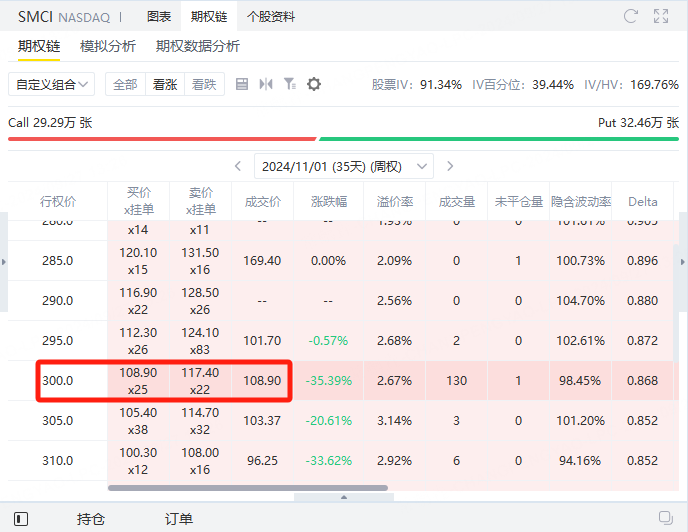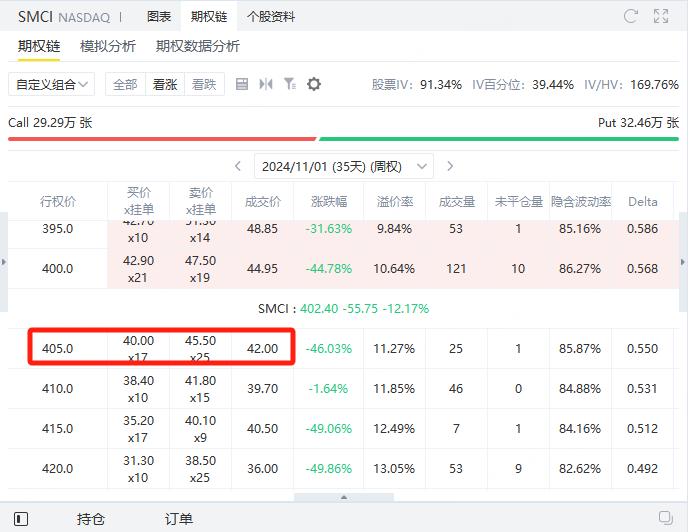SMCI Under Scrutiny: How to Short with Options?
On September 26, right before the U.S. market's midday session, $SUPER MICRO COMPUTER INC(SMCI)$ 's stock took a nosedive after Hindenburg Research released a short report. The U.S. Department of Justice is investigating the server manufacturer.
This news caused SMCI to plummet after initially rising 5.7%. The volatility led to several trading halts. $Philadelphia Semiconductor Index(SOX)$ also saw its gains shrink from 4.4% to under 1%.
When trading resumed, Supermicro’s stock had dropped as much as 18.6%, marking its biggest decline in nearly a month and nearing an eight-month low set on September 6. Other popular chip stocks also fell; $NVIDIA Corp(NVDA)$ , which initially rose 3.4%, reversed course and dipped 1%, managing to close slightly higher.
Social media buzz suggested NVIDIA’s third-largest customer, SMCI, is under DOJ investigation for "accounting irregularities." This raised concerns about potential fallout for Nvidia, with fears that the financing of its suppliers could be unraveling.
Notably, SMCI announced a 10-for-1 stock split effective October 1, aimed at making its shares more affordable after a rapid price surge. Earlier this year, the stock skyrocketed 14 times, pushing the company's market cap to $66 billion.
What is a Bear Call Spread Strategy?
A bear call spread is an options strategy used when traders expect an asset's price to decline. It allows for a limited-risk way to short the asset.
Specifically, this strategy involves buying call options at a certain strike price while simultaneously selling the same number of call options at a lower strike price, both with the same expiration date.
1.Study Case: Short SMCI
Let’s take Supermicro, it is currently priced at $400. If an investor expects the stock to drop to around $300 by November 1, they can use a bear call spread strategy to short the stock.
Step 1: Sell a call option expiring on November 1 with a strike price of $300, earning $10,890 in premium.


2.Profit and Loss
- Net Premium Income: $10,890(Income from selling the option) - $4,200(Cost of buying the option) =$6,690 (Net premium income)
- Maximum Profit: If Supermicro's stock price is below $300 at expiration, both options expire worthless. The investor retains the entire net premium, resulting in a maximum profit of $6,690.
- Maximum Loss: If the stock price exceeds $405, the investor will sell at $300 and buy at $405, incurring a $105 loss per share. The maximum loss: $10,500 (the difference) - $6,690 (Net premium income)= $3,810.
- Break-even Point: The break-even point occurs at the stock price of $300 plus the net premium per share, which equals $366.90.
Conclusion
In summary, this strategy has a maximum profit of $6,690, a maximum loss of $3,810, and a break-even point of $366.90.
A bear call spread strategy offers a controlled risk profile with substantial profit potential. The main advantage is that it reduces the risk of shorting—buying a higher strike call helps offset the risk of selling a lower strike call. Unlike direct shorting, which has theoretically unlimited risk, the bear call spread significantly limits potential losses.
Disclaimer: Investing carries risk. This is not financial advice. The above content should not be regarded as an offer, recommendation, or solicitation on acquiring or disposing of any financial products, any associated discussions, comments, or posts by author or other users should not be considered as such either. It is solely for general information purpose only, which does not consider your own investment objectives, financial situations or needs. TTM assumes no responsibility or warranty for the accuracy and completeness of the information, investors should do their own research and may seek professional advice before investing.

